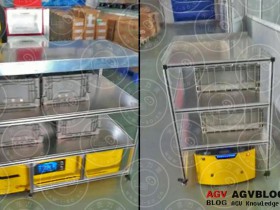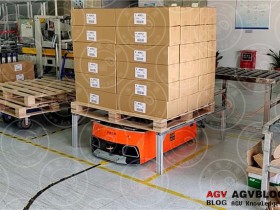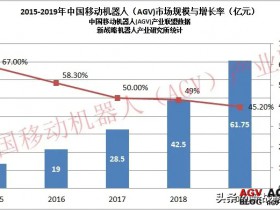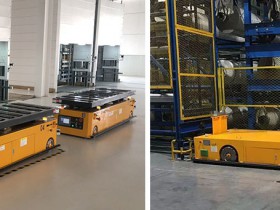With the continuous development of the industry and the intensification of market competition, in addition to traditional product sales, current mobile robot companies are exploring more business models to provide customers with more added value and enhance their competitiveness in the market.
From products to services, mobile robot companies continue to explore
The current domestic business model of logistics mobile robots can be divided into four categories:
1. Provide equipment: point to the integrators to provide stand-alone equipment products, and the robot manufacturers provide related products. The integrators plan and design according to the actual application environment. The robot manufacturers charge the integrators according to the number of products.
2. Provide product solutions: refer to the establishment of an automated warehouse for the enterprise, providing services that integrate planning and design, software development, equipment production, on-site installation, and after-sales service. The enterprise manages the warehouse and the robot manufacturer charges industry solution fees.
3. Provide operation services: refer to the operation of an intelligent warehouse for the enterprise. The logistics robot manufacturers provide equipment, personnel and operation services to help the enterprise manage the warehouse and be responsible for the orders sent to the warehouse. The robot manufacturer is responsible for the daily operation of the warehouse and charges a certain service fee according to the number of warehouse shipments. The birth of this model is mainly due to the high-risk attributes of the logistics industry: in different periods, each customer's business demand is different, and only a relatively balanced supply and demand relationship can avoid the waste of robot resources and maximize profit. .
4. Provision of rental services: refers to the rental services of warehousing logistics robots provided by some small and medium-sized enterprises that are unable to bear the cost of robot substitution. Warehouse logistics robot manufacturers will charge rental fees on a monthly or annual basis. This type of rental service can reduce the use of Willingness for corporate financial pressure.
At present, providing products and solutions is still the most important business model in the industry. Agency operation and equipment leasing are new models that have emerged in recent years. The "Robot as a Service (RaaS)" service that Jizhijia is currently developing is also currently available. It has achieved certain results. It has operated more than 300,000 square meters of warehouses through equipment operation or intelligent warehousing services, and has created a shared network of thousands of robots. According to ABI Research's research predictions, by 2026, 1.3 million robots will be installed and applied in the RaaS world, and this market will generate US $ 34 billion in revenue. At present, the market scale of RaaS is rapidly expanding globally, and European robot companies such as Locus, InVia, RightHand, etc. have also launched one after another. In addition to Jizhijia, Kuicang also has its own self-operated warehouse. In addition, some warehouse robot companies are also planning and watching.
Cultivate the market and expand the business, is it feasible to promote the new model on a large scale?
In fact, the reason for the transformation of enterprises from equipment providers to warehousing service providers is nothing more than the following two reasons:
Expand business. The current penetration rate of logistics automation is actually not high. Especially for some small and medium-sized e-commerce or manufacturing companies, the cost of logistics automation transformation is difficult to bear, regardless of whether the equipment is operated or leased, which can effectively reduce the application companies in investing in robots. Financial barriers, and can obtain "instant" return on investment (ROI), which undoubtedly enhances the company's willingness to use.
Considerations for nurturing the market. Yang Wei, the founder of Quick Warehouse, once mentioned that in the early market education period, in the face of customers who did not know how to apply warehousing robots, they chose to operate several warehouses and provide the most practical operating services, so that they can continue to accumulate scene capabilities and deeper Experience the needs of customers, and then improve and develop their own new products, which is the main reason why Kuai warehouse chooses its own warehouse.
From the above perspective, the new model seems to have many benefits, but in the process of promotion and implementation, there are actually some problems. For example, for the operation of equipment, mobile robot manufacturers need to form a special warehouse operation team. The intelligent warehouse is not only limited to mobile robots, but also the cooperation between various devices. Therefore, this service model is for robot manufacturers ’technology and capital. The requirements of other aspects are very high. The general manufacturers have no ability to implement this model. Most of the companies that are implementing this model are the industry ’s leading companies. So in fact, this model of self-storage is for most mobile robot manufacturers. It is not applicable.
In addition, regarding the issue of equipment leasing, mobile robots are actually not a very standardized product, and most of them need to be customized according to the specific environment during the application process. The investment of mobile robot enterprise equipment leasing in the early stage is actually not It will take less time and the income is difficult to guarantee, which is actually not a good choice for robot manufacturers.
More possibilities for mobile robots
The above mentioned are all possible implementations of the new model of mobile robots in the fields of manufacturing and warehousing and logistics. In fact, in the commercial market, the leasing model is also being implemented.
For example, Gaoxian ’s commercial cleaning robot products have been fully leased to Singapore. Qinglang ’s current profit mainly comes from the sale and lease of intelligent robots. Although Purdue ’s food delivery robot products are currently mainly sold, there are also some Lease to reduce the threshold of experience to help increase sales conversion.
Compared with the industrial market, the acceptance of the mobile robot rental model in the commercial field may be higher. First, because the commercial market application is not mature, the rental model is obviously more in line with the needs of the application side initial attempts. Second, for some For restaurants, the one-time investment of mobile robots may be difficult to bear, and the cost of leasing is relatively more acceptable. For example, the rental cost of Qinglang ’s peanut robot is 99 yuan a day, less than 3,000 yuan a month. The price is believed to be acceptable to most merchants.
In fact, whether it is in the warehousing and logistics field or the commercial market, the exploration of mobile robot companies in terms of business models confirms that the industry is constantly expanding and expanding, and will also promote the possibility of mobile robots in more subdivided scenarios and fields.





